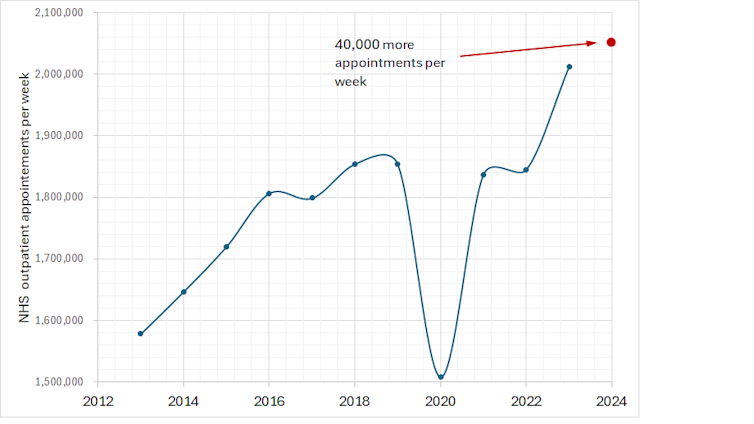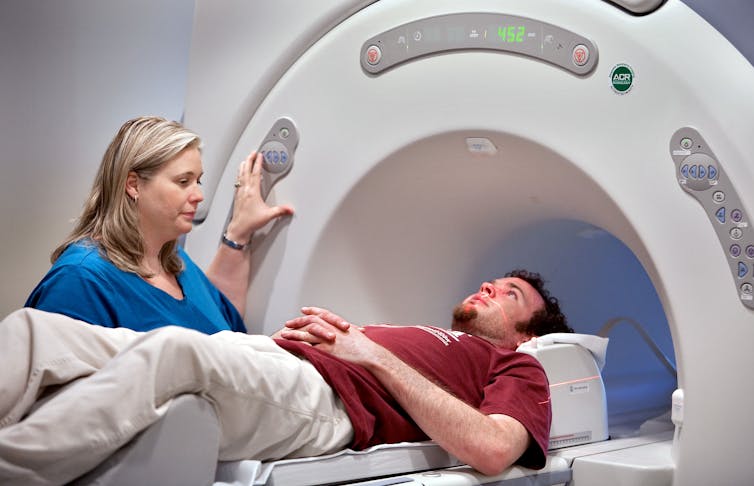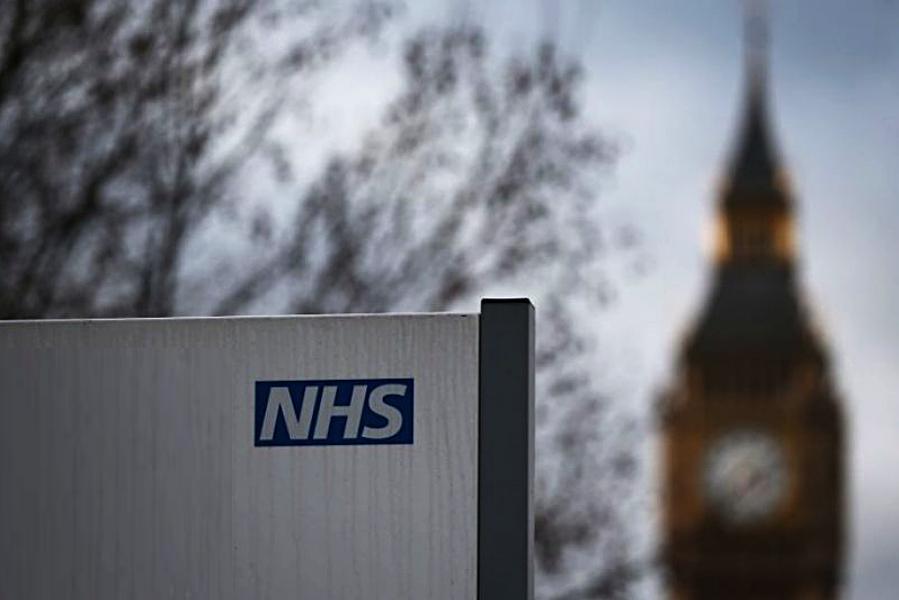Thu 07 November 2024:
Chancellor Rachel Reeves’ debut budget pledged increases of £22.6 billion in day-to-day spending for the NHS and £3.1 billion in capital spending over the next two years. The increase in day-to-day spending is intended to fulfil Labour’s campaign promise of “40,000 more appointments per week” from their election manifesto.
This often-repeated promise gives the government a tangible short-term goal in its longer-term mission to meet the 18-week target for elective care. However, while 40,000 additional weekly hospital appointments may sound impressive, a closer look at NHS statistics suggests that this increase is less significant than it first appears.
NHS England conducted about 2 million outpatient appointments per week in 2023-24, meaning that 40,000 more appointments per week would represent only a 2% increase.
In recent years, the average annual increase in weekly outpatient appointments has been 2.9%, meaning that an extra 40,000 appointments per week would be a slower than usual increase.
The chart below shows the average number of outpatient appointments per week for each financial year since 2013-14, with a red point indicating an increase of 40,000 per week for 2024-25.
Average weekly outpatient appointments in NHS England, 2013-14 to 2023-24

Author’s calculations from NHS outpatient activity data.
While day-to-day NHS spending is promised the largest increase in funds, the increase in capital spending is proportionally greater as it increases from a lower base (10.9% increase per year over two years for capital spending, versus 3.4% for day-to-day spending).
This boost is an important development, because some recent policy analysis of the NHS emphasises how far behind it is in capital spend. In particular, the Organisation for Economic Co-operation and Development, which has 38 rich country members, has noted that the UK has fewer diagnostic scanners, such as MRI machines, compared with other developed countries. This may be why the chancellor specifically dedicated some of the new capital spending to new diagnostic equipment.
Her budget directs some of the new capital funds towards developing more community diagnostic centres (CDCs) and “surgical hubs” – two types of facility that have emerged in recent years. I am a part of a research team at the University of York that has analysed data on CDC performance. My colleagues and I are also working on a project to evaluate the surgical hubs programme.
__________________________________________________________________________

https://whatsapp.com/channel/0029VaAtNxX8fewmiFmN7N22
__________________________________________________________________________
Both of these types of facility share common features. They aim to ring-fence staff, buildings and equipment for elective (planned) care, separate from major hospital sites that deal with emergency patients.
Surgical hubs are facilities designed for elective surgery, such as hip replacement operations or cataract surgery. These hubs can either be part of an existing major hospital site or a stand-alone facility, such as the South West Ambulatory Orthopaedic Centre, built on a new hospital site initially developed as a “Nightingale” hospital during the COVID pandemic.
Similarly, CDCs are stand-alone facilities for planned (non-emergency) diagnostic tests and scans, such as those used for diagnosing cancer or heart problems. They are designed to be located away from major hospitals in more convenient community locations. Examples include the Askham Bar CDC, located in a supermarket car park in York, and the Wood Green CDC, located in a shopping centre in north London.

The UK has fewer critical diagnostic scanners, such as MRI machines, than other wealthy countries. Mic Smith / Alamy Stock Photo
Promising results
Initial evaluations of these new facilities show promising results. Our recent paper evaluating the early stages of the CDC programme showed that the opening of a CDC increased the amount of diagnostic tests in an area by up to 13%.
The Health Foundation (a health policy thinktank) has published an early evaluation of the surgical hubs programme, which shows that hospital trusts that implemented new surgical hubs increased their elective surgery numbers by nearly 22%.
However, neither study shows any effect on lowering waiting times for patients. This could be because the policies are still in their early stages and it takes time for new facilities to reduce a backlog of patients.
However, it’s also possible that new facilities increase awareness and demand for care in the local population, keeping waiting times high.
The budget’s investment in increasing NHS capacity through more day-to-day spending and more capital facilities is a welcome first step by the government. The focus on capital investment is particularly important, having been lacking in recent years.
However, the scale of the NHS’s challenges remain vast, with growing demand quickly eating up any new resources added in to the system. In this environment, improving performance, such as waiting times, to the levels seen under the last Labour government remains a distant prospect.
Author:
![]()
Peter Sivey
Reader in Health Economics, Centre for Health Economics, University of York
This article is republished from The Conversation under a Creative Commons license. Read the original article.
__________________________________________________________________________
FOLLOW INDEPENDENT PRESS:
WhatsApp CHANNEL
https://whatsapp.com/channel/0029VaAtNxX8fewmiFmN7N22
![]()
TWITTER (CLICK HERE)
https://twitter.com/IpIndependent
FACEBOOK (CLICK HERE)
https://web.facebook.com/ipindependent
YOUTUBE (CLICK HERE)
https://www.youtube.com/@ipindependent
Think your friends would be interested? Share this story!





